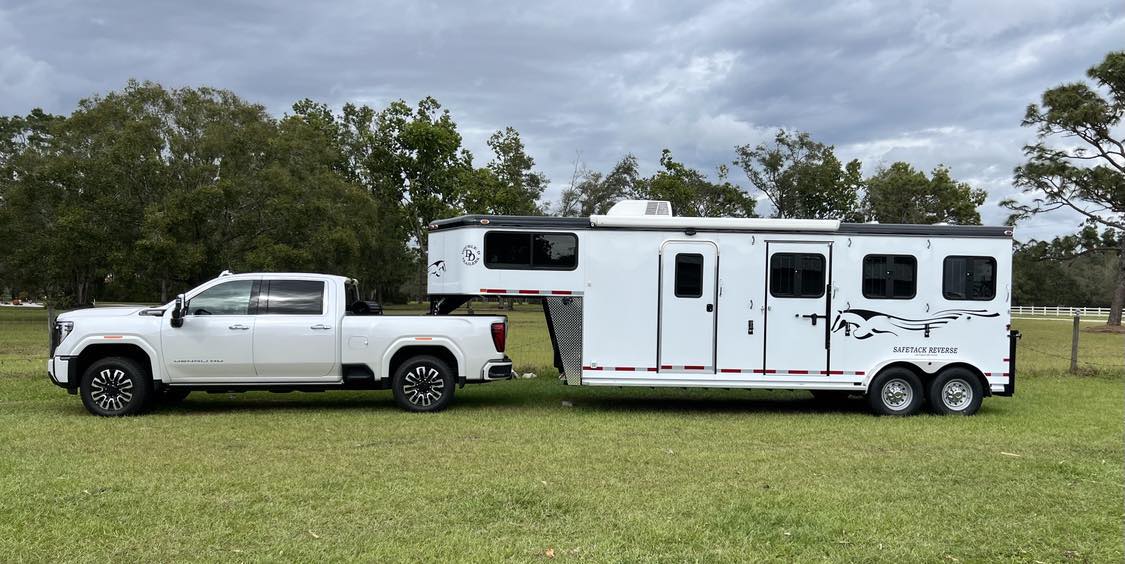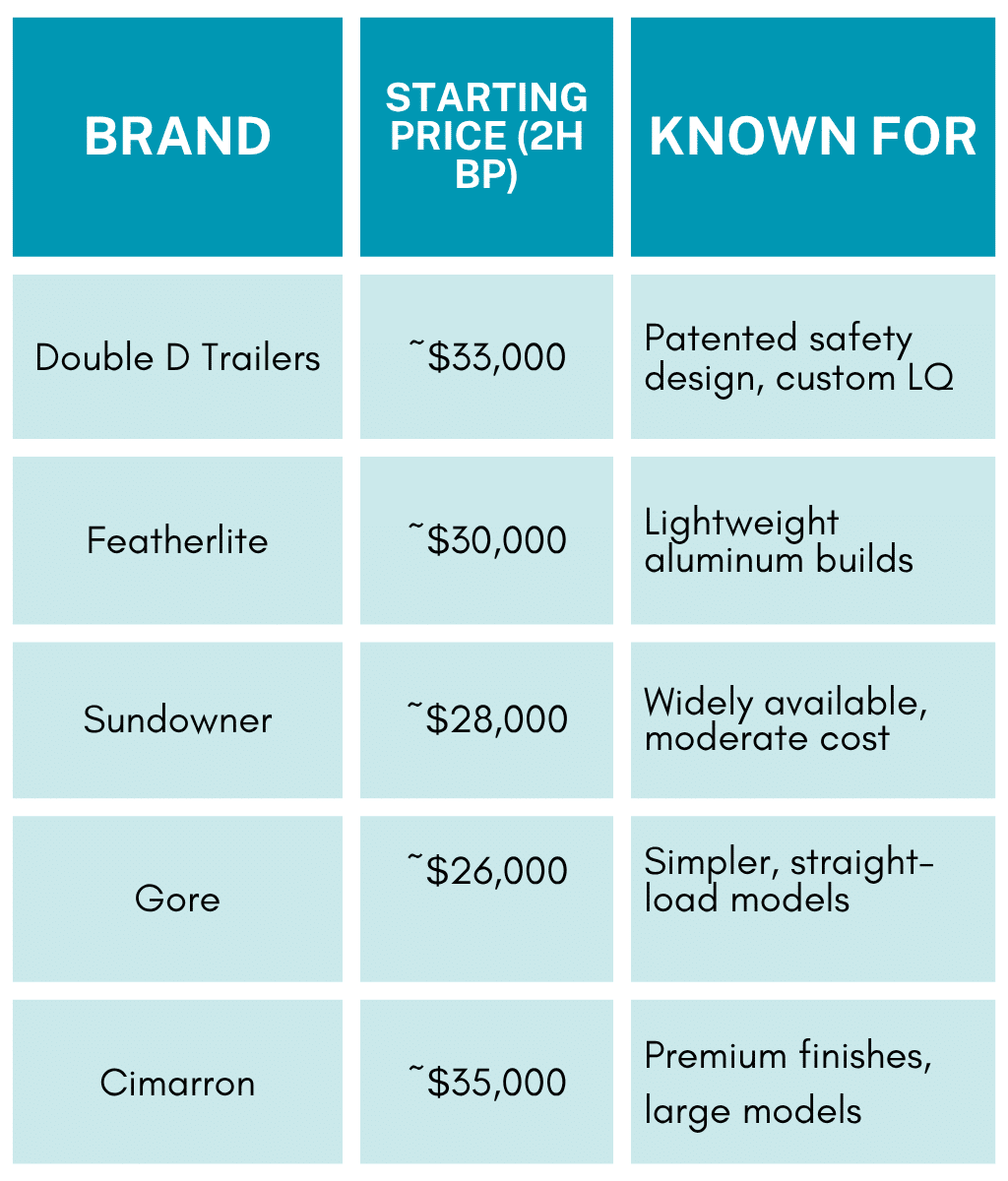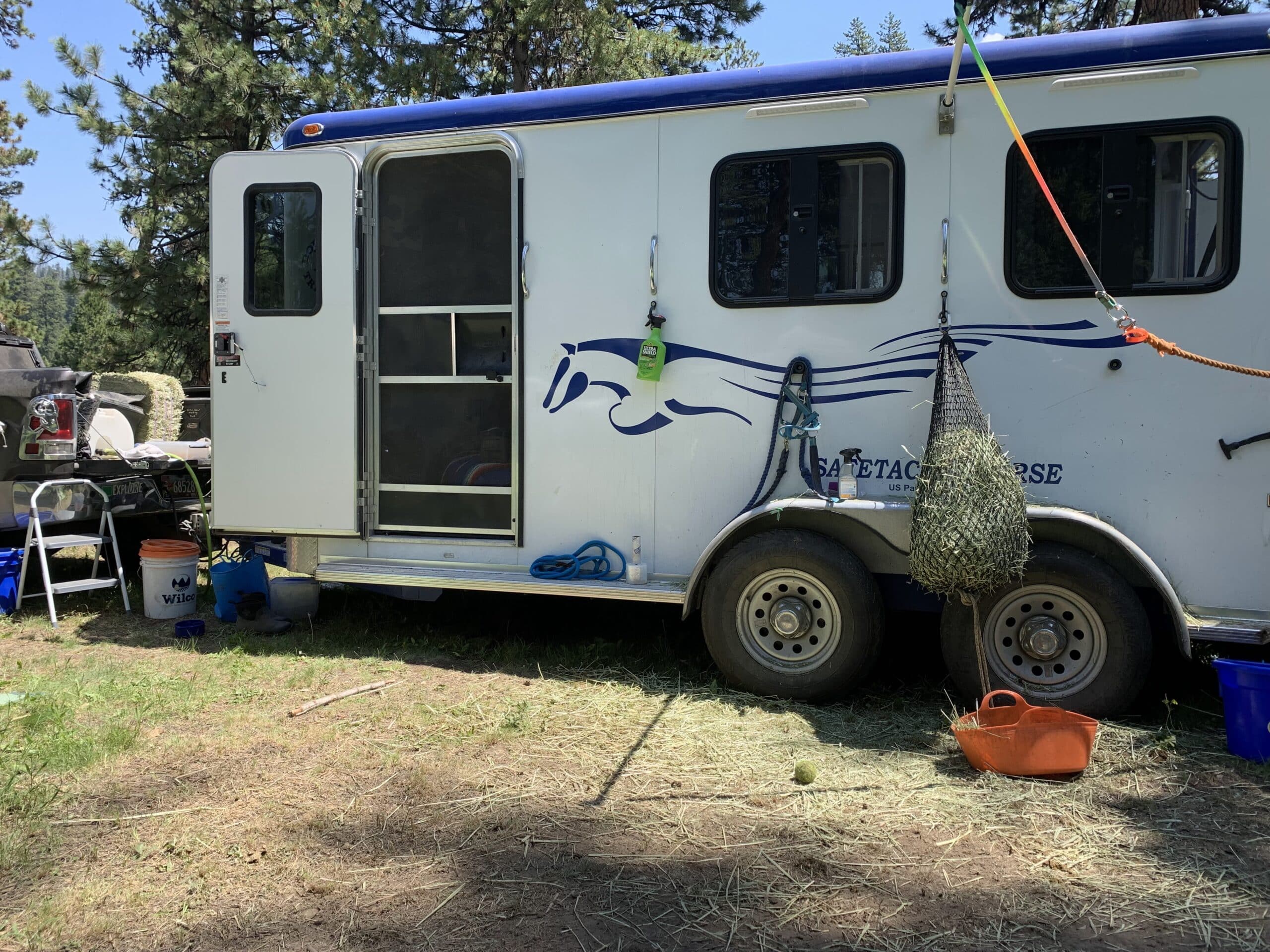Horse Trailer Costs Explained: Total Ownership Guide (New vs. Used, Bumper Pull vs. Gooseneck)
Full Breakdown: New vs. Used, Bumper Pull vs. Gooseneck, and Hidden Ownership Costs
Quick Answers:
- New bumper pull trailers: $25,000–$45,000
- New gooseneck trailers: $40,000–$140,000+
- Used trailers: 20–50% less
- First-year total cost: $35,000–$60,000+ after customization, insurance, and maintenance
- Ongoing annual costs: $2,000–$5,000+
Buying a horse trailer isn't just a one-time purchase, it’s a long-term investment in your horse’s safety, your travel convenience, and your financial future. If you're budgeting for a new or used trailer, don’t stop at the sticker price. There’s a full spectrum of ownership costs that can add up fast.
For a deeper look at resale value, real-world ownership costs, and how smart construction can save thousands, see our guide to the total cost of horse trailer ownership
This guide breaks it all down, from base prices and trailer types to ongoing maintenance, financing, and real-world cost examples. Whether you're comparing bumper pull vs. gooseneck or wondering what makes some trailers $100,000+, you’ll find honest answers here.
What Affects the Price of a New or Used Horse Trailer?
The cost of a horse trailer depends on 5 core factors:
1. Size & Hauling Capacity
In general, more horses = more cost.
- 2-horse bumper pull (basic): $25K–$35K
- 3-horse gooseneck (slant load): $40K–$65K
- 4-horse reverse load w/ upgrades: $60K–$90K+
Double D Trailers Tip: We design trailers to optimize space and safety without overbuilding. You don’t always need the biggest, just the smartest.
2. Materials & Build Quality
- Steel: Cheaper, strong, but heavier and prone to rust
- Aluminum: Lightweight and rust-resistant, but can flex over time
- Z-Frame®: Patented zinc infused metal alloy used in Double D Trailers for maximum strength without the rust
- Rumber Flooring: Made from recycled tires; adds upfront cost but reduces lifetime maintenance
A better-built trailer saves money long-term.
3. Hitch Type
- Bumper Pull: More affordable and compatible with SUVs/small trucks. Ideal for smaller trailers and occasional haulers.
- Gooseneck: Offers increased stability and tighter turning radius thanks to the over-axle hitch position. Requires a pickup truck with a bed-mounted hitch. Especially useful for larger trailers, but not always "safer" - trailer design and towing set up matter just as much.
- 5th Wheel: Rare in horse trailers, but used occasionally in large LQs. Uses a different type of hitch plate typically seen in RVs and commercial haulers.
Most buyers opt for bumper pull or gooseneck depending on tow vehicle.
4. Features & Customization
- Standard features: Dividers, lights, ventilation, tack room
- Upgrades:
- SafeTack® Reverse design
- Mid-tack rooms
- Double side ramps
- Vent fans, camera systems, hay pods
- Living Quarters (LQ):
- Basic LQ (bed, AC): Adds ~$10K–$30K
- Full LQ (bathroom, kitchen, slide-outs): Can add $50K–$100K+
5. Brand Reputation
Top manufacturers cost more, but they retain value.
Learn what really sets top trailer brands apart in our brand comparison guide.
What Are the Hidden Costs of Horse Trailer Ownership?
Once you buy your trailer, here's what you'll still need to budget for:
-
Insurance typically ranges from $350 to $450 per year and is required in most states—especially if you’re financing the trailer.
-
Maintenance and repairs can cost anywhere from $900 to $3,000+ annually, depending on how often you haul. Expect expenses for tires, brakes, light repairs, rust prevention, and flooring upkeep.
-
Towing vehicle wear is often overlooked. Frequent hauling puts added strain on your transmission and brakes, which could lead to $1,000+ per year in added vehicle maintenance.
-
Registration and taxes vary by state and trailer type, with costs ranging from $0 to over $1,000 depending on where you live and what you tow.
-
Storage or protection should also be considered. If you’re not storing your trailer at home, expect to pay $300 to $2,000 annually for an outdoor storage lot or a high-quality, weather-resistant trailer cover.
-
Financing costs can add 20–30% to your total cost over the life of the loan, depending on your down payment, interest rate, and loan term.
How to Budget for a Horse Trailer (Without Surprises Later)
Buying a horse trailer is rarely a one-line item, it’s a multi-part investment. The good news? With the right plan, it doesn’t have to be overwhelming. Whether you're buying outright or financing, here's how to set a realistic budget:
Step 1: Set Your Total Budget Range
Factor in not just the base trailer price, but upgrades, financing interest, taxes, insurance, and maintenance. A realistic first-year out-of-pocket range for new buyers is often $35,000–$60,000+, depending on trailer type and features.
Step 2: Decide How You’ll Pay
- Cash Purchase: Lower long-term cost, higher upfront requirement.
- Financing: Spread out payments, but expect 20–30% added cost over time. A 15% down payment and average 7.5% APR is common.
Step 3: Account for Ownership Costs
- Include insurance, registration, future repairs, and potential upgrades. Plan for $2,000–$5,000 annually.
Step 4: Protect Your Investment
- Choose a trailer that holds its value. Trailers from reputable brands like Double D Trailers often resell for 80–90% of their original value after 5 years.
Step 5: Use a Budgeting Formula
Try this simple calculator to estimate true cost:
(Purchase Price + Insurance + Maintenance + Interest) – Estimated Resale Value = True 5-Year Cost
Need help? Schedule a free consult with our staff to get a personalized quote and realistic budget.
Top Budgeting Questions from Buyers:
- "How much trailer can I afford?"
Depends on how much you can pay up front or finance monthly. We’ll help you break it down. - "Is it smarter to buy used or new?"
New trailers cost more but offer safety, customization, and warranty. Used saves money but comes with more risk. - "How much do upgrades really add?"
Living quarters, custom stall layouts, and airflow systems can add $5K–$50K+. But some upgrades boost resale value too. - "Will this trailer still be worth something in 5 years?"
That depends on brand, condition, and build quality. Double D Trailers are known for retaining value. - "Can I afford this with my truck?"
Towing capacity matters, don’t forget to factor in a potential truck upgrade if needed.
Did You Know?
While comparing prices, remember that gooseneck trailers often hold resale value better, and living quarters models can save thousands in hotel stays during long trips.
Real-World Cost Example: First-Year Breakdown
Model: Double D Trailers SafeTack 2-Horse Bumper Pull
Base Price: $33,042
Upgrades (SafeTack Reverse + Options): +$8,000
Financing (Estimated Interest Over 5 Years): +$5,012
Taxes, Registration: +$500
Annual Insurance: +$400
Maintenance: +$1,500
Estimated Total Cost Over 5 Years: $48,454
Note: That $5,012 in financing is not paid all at once. If you finance with 15% down and an average 7.5% APR loan, the total interest cost over 5 years will be around $5,000. Your first-year out-of-pocket would include just your down payment (around $6,150) and monthly payments (~$827), not the full total above.
True Cost Tip: Unlike other brands that lose value fast, Double D Trailers are known to hold their resale value exceptionally well. That means your true cost after resale is often much lower. Pay cash and sell in 5 years? You could recover most of your investment and your true cost to own could be under $10,000.
Horse Trailer Cost FAQs
Q: How long will my trailer last?
A high-quality trailer that’s cleaned, stored properly, and maintained can last 15–25 years or longer.
Q: Is buying used worth it?
Used trailers cost 20–50% less but may come with hidden issues. Always inspect the flooring, frame, and roof. Read: 5 Tips for Buying a Used Horse Trailer.
Q: How fast does a trailer lose value?
Depreciation averages 15–20% in the first year, and ~10% annually after that. However, trailers from brands like Double D Trailers often retain higher resale value.
Q: How do people afford high-end trailers?
Most owners finance their trailer and build the cost into their monthly budget. We offer flexible plans, learn how financing works here.
Q: Are stock trailers cheaper?
Yes, but they often lack essential safety features. If you’re hauling horses, it's worth investing in a purpose-built trailer with stall dividers, airflow systems, and padding.
Bottom Line: What’s the True Cost of a Horse Trailer?
The true cost of a horse trailer isn’t just the price on the sales page, it’s what you pay up front minus what you can sell it for later.
Let’s say you spend $50,000 on a trailer today. If you decide to sell it five years from now, and the market for new trailers has continued to rise (as it has year over year), you could reasonably expect to resell for $40,000–$45,000, especially with a well-maintained, high-quality trailer like a Double D Trailer.
That puts your real cost of ownership at just $5,000 to $10,000 over five years, plus basic maintenance and insurance. And that’s a far better long-term value than what you’ll find with most mass-produced trailers, which often depreciate faster and sell for far less down the road.
Want examples, a working calculator, and real customer resale stories? Check out our in-depth guide to total trailer ownership cost.
Want help picking the right model for your horses and your budget? Schedule a free video consult »
New to trailers? Sign up for our mailing list to receive your FREE copy of The Honest-to-Goodness Truth About Horse Trailers for expert insights.




